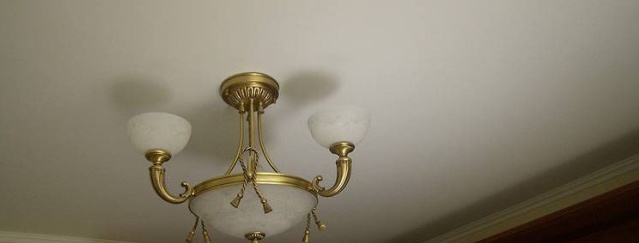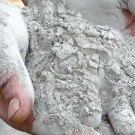Ceiling paint: types, advantages and disadvantages
Started a repair in an apartment, house or office? You think what and how better to finish the ceiling? Or you have already decided, but still doubt what kind of coverage for your the ceiling select? It is very important to determine the materials and their quality in order to achieve the desired result in the repair of the premises. Painting the ceiling can be a great solution when choosing finishing material. A wide selection of colors will help to equip the ceiling to suit every taste and style. But what kind of ceiling paints are there? What are their advantages and disadvantages? Let's figure it out in order.
The surface of the ceilings during the repair very often shows the repairmen their unpleasant surprises. These are various cracks in the plaster, and the irregularities of the ceiling itself, and all kinds of recesses and bulges that you cannot even hide with wallpaper. And if you have already definitely decided to paint the ceiling and not to paste it, then it is all the more important to pay attention to the condition of the plaster. After all, the paint emphasizes any defects on the surface, even the smallest. That is why it is so important to plaster and level the ceiling before painting.
Types of Ceiling Paint
Today, there are many types of ceiling paints, which have their own characteristics and features. Their purpose is often multifunctional and allows you to achieve certain tasks in the repair of ceilings. Such, for example, as the repair of small cracks, the complete painting of stains of old paint or abrasion resistance.
Paints can be glossy, matte and textured. Their choice is most often based on the general background of the interior, the design soil for which is created during the repair.
By their basic composition, paints are divided into several groups:
- emulsion;
- alkyd;
- silicate;
- glue.
Each group of paints is a collection of different paints that have their own unique properties.
Advantages and disadvantages of ceiling paints
- Advantages: deep-penetrating ability protects the ceiling surface for a long time, the absence of various glare and reflection of sunlight on the surface, successfully conceal minor defects of ceiling surfaces (both visually and physically);
- Disadvantages: large pores of the painted coating are often clogged with dust and dirt, which makes it difficult to clean and wash the ceiling.
The right and competent choice of any of the colors will provide not only the beautiful interior of the room, but also create additional comfort while working with this or that paint. Therefore, it is worthwhile to carefully select the material that is most suitable for operational purposes after repair.



